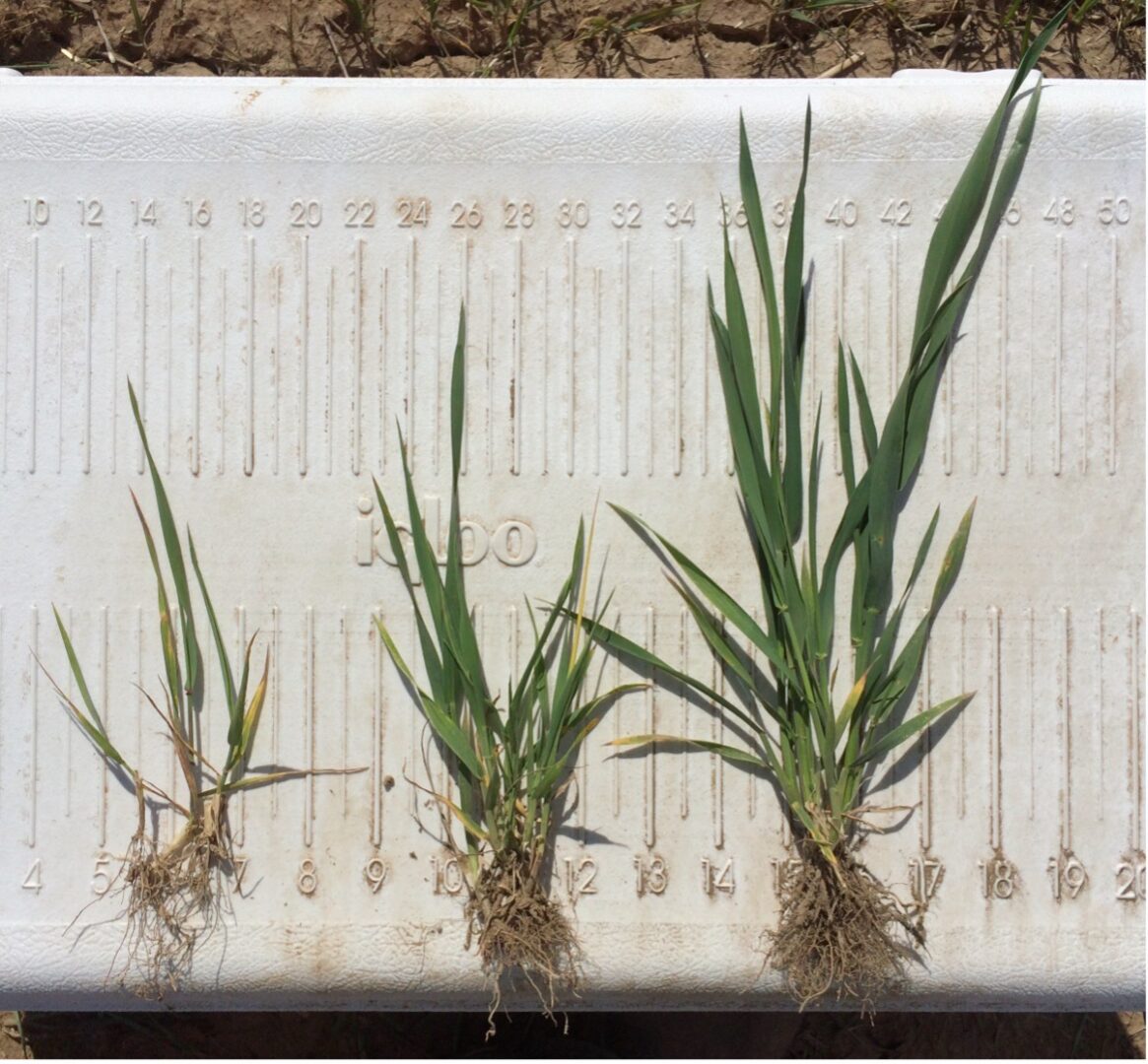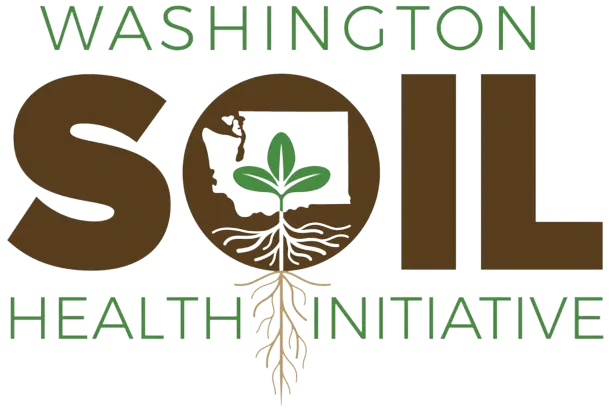
A burning need for liming amendments on the Palouse
In Northeast Washington, where soil pH levels can be critically low, farmers and researchers are exploring the use of high-ash biochar created from field residue as a liming material
June 13, 2024
Authors: Claire Phillips & Kristin Trippe
If your soil test pH values are so low you do a double take, it’s a good sign that you are in Northeast Washington.
While the Palouse region is blessed with deep loess soils, scenic landscapes, and some of the highest rainfall levels in Eastern Washington, its soils are also prone to declining pH. Rockford, Washington, located about 20 miles outside of Spokane, is one of the areas most impacted by soil acidification. Soil pH is commonly 4 to 5 here.
An alternative to field burning
David Gady, a 4th generation Washington farmer, grows bluegrass (lawn seed) in Rockford with his brother and father. In the early 2010s, David became a biochar innovator in the region when he built a gasifier to convert bluegrass straw and seed screenings into biochar and energy.
It was one of several pieces of equipment David was experimenting with to find an alternative to open-field burning.

Field burning used to be common in bluegrass and grain production to manage residues, control weeds, and return soil nutrients. But burning was phased out in the 1990s due to air quality concerns.
David first developed a mobile field burner for his M.S. in agricultural engineering at Washington State University. He then developed a stationary gasifier, because of the prospect of producing on-farm energy.
As luck would have it, gasifiers produce a high-ash biochar, which proved to be an excellent amendment for acidic Rockford soils.
Biochar is created when low-value waste plant materials, like straw, wood chips, or food waste, are partially combusted in the presence of little oxygen. Indigenous people in tropical regions traditionally used charcoal to improve soils, and the practice has become popularized and widely adopted around the world.
Biochar as a liming amendment
David teamed up with scientists from the USDA Agricultural Research Service in Corvallis, Oregon to evaluate the energy and biochar the gasifier produced.
They detected no heavy metals or toxins in the biochar. And they confirmed that the biochars had a 12-16% liming-equivalence score, which is quite high for a biochar. (Read more about lime and liming). Biochars produced at low temperature or by pyrolysis (i.e. with no oxygen present, in contrast to the low oxygen levels present during gasification) generally have very low ash contents, and low lime scores.
In 2015, we got involved in the project, picking up the reigns from retiring scientists. We took over a small-plot trial on the Gady farm comparing biochar and hydrated lime on a winter wheat crop. We applied biochar at 8 tons/acre1 and lime at 1 ton/acre to try and increase soil pH from the low 4s to low 5s.
We found that over two years, both lime and biochar increased soil pH about the same amount. But the lime increased wheat yields by about 2x while the biochar increased yield by about 3x over the unamended control.


It was not completely clear why the biochar out-performed lime. The lime was actually better at reducing soil aluminum concentrations. (Aluminum becomes very soluble in low pH soils, and aluminum toxicity is the main reason for poor plant growth at low soil pH.)
On the other hand, the biochar had other soil health benefits. The biochar plots had higher soil moisture, water infiltration, and fungal abundance, which may have supported crop growth.
A chronic shortage of liming materials
Soil acidification was recognized as a problem in Northeast Washington and the Idaho Panhandle since at least the 1980s. In a series of publications, University of Idaho professor Bob Mahler pointed to both bad luck and nitrogen fertilizer use as causes.
The region has high rainfall and was historically forested, which led to naturally low soil pH before the area was farmed. Application of ammonium-based nitrogen fertilizers over many decades made soil pH decline further. With no naturally occurring limestone in the inland PNW, liming materials that could neutralize acidity were too expensive to obtain. Gradual loss of organic matter due to annual cropping and tillage may have made the problem worse, because soil organic matter helps to buffer pH.

Over the last 40 years soil pH has continued to decline. Periodically, farmers and researchers have explored other liming materials, including boiler ash from lumber mills, and beet lime (a byproduct of beet sugar production) from Southern Idaho. Concerns about contaminants and high transportation costs have been obstacles to widespread use.
Because there are no simple solutions to the acidification problem, home-grown remedies like biochar are interesting, and provide one more arrow in the quiver of tools.
It would certainly be more direct to create ash by direct field burning than by harvesting residues to produce biochar. But gasification produces a small amount of smoke in comparison to open field burning, allows for energy capture, and probably creates a more consistent product, with a greater fraction of long-lasting charcoal. The charcoal component of biochar provides carbon sequestration, and other soil health benefits.
Could a person make enough biochar to correct soil pH?
We made calculations of how much straw and seed cleaning residues the Gady’s could produce as feedstock for the gasifier. We used the NRCS Soil Conditioning Index as a guideline for how much straw can be sustainably harvested while still maintaining soil organic matter levels.
We calculated that if the Gadys use all the straw that can be “sustainably”2 harvested, plus all the seed cleanings from the mill as biochar feedstock, they could make enough biochar to amend about 9% of their acreage every year. And that means they could increase their soil pH from about 4.5 to 5.5 across their farm over a period of about 12 years.
While promising, we note that this calculation just represents material feasibility. It represents the amount of liming material the Gadys could produce if time and energy were unlimited resources, equipment never broke, and the straw wasn’t already used for livestock. In reality, making biochar is an enterprise that can take a fair amount of time, and producers need to consider whether it fits into their overall farm business.
Farmers interested in purchasing pre-made biochar or renting a gasifier to try it on their farm have options too. For example, Qualterra is a Northeast Washington-based company that builds mobile biomass processing units. They use gasification to convert wood chips or straw to biochar and energy. They are able to make high-ash biochars (i.e. biochars with some liming value) from wheat straw. They have many field trials throughout Washington.
Biochar and lime as climate-smart practices
While biochar is often described as a practice for carbon sequestration, using it to increase soil pH is a climate-smart practice too. Correcting soil pH is a prerequisite to implementing many other conservation practices.
Correcting soil acidity can allow canola, legumes, and other cover crops that are sensitive to low pH to be incorporated into rotations. Legumes, which are particularly vulnerable to low pH, do not require supplemental N fertilizer that contributes to soil acidification and greenhouse gas emissions, making them a good addition to crop rotations.
Direct seeding (no-till) often worsens soil acidity because the soil zone where fertilizer is applied does not get mixed and diluted. Applying lime does not always work as well as hoped in direct-seeded systems.
The Gady case study shows that high-ash biochars are a home-grown liming material that could help shore-up the limited supply. On the Gady farm, they improved yields more than an equivalent amount of hydrated lime, and this may reflect the broader soil-health benefits of biochar.
-
Yes, that is a LOT of biochar, especially by volume.
-
Recognizing that some producers prefer to return all residues to the soil.

Claire Phillips & Kristin Trippe
Claire is a Research Soil Scientist for the Northwest Sustainable Agroecosystems Unit in Pullman, Washington & Kristin is a Research Microbiologist with the Forage Seed and Cereal Research Unit in Corvallis, Oregon
This article was published by the Washington Soil Health Initiative. For more information, visit wasoilhealth.org. To have these posts delivered straight to your inbox, subscribe to the WaSHI newsletter. To find a soil science technical service provider, visit the Washington State University Extension website or the Washington State Conservation District website.

